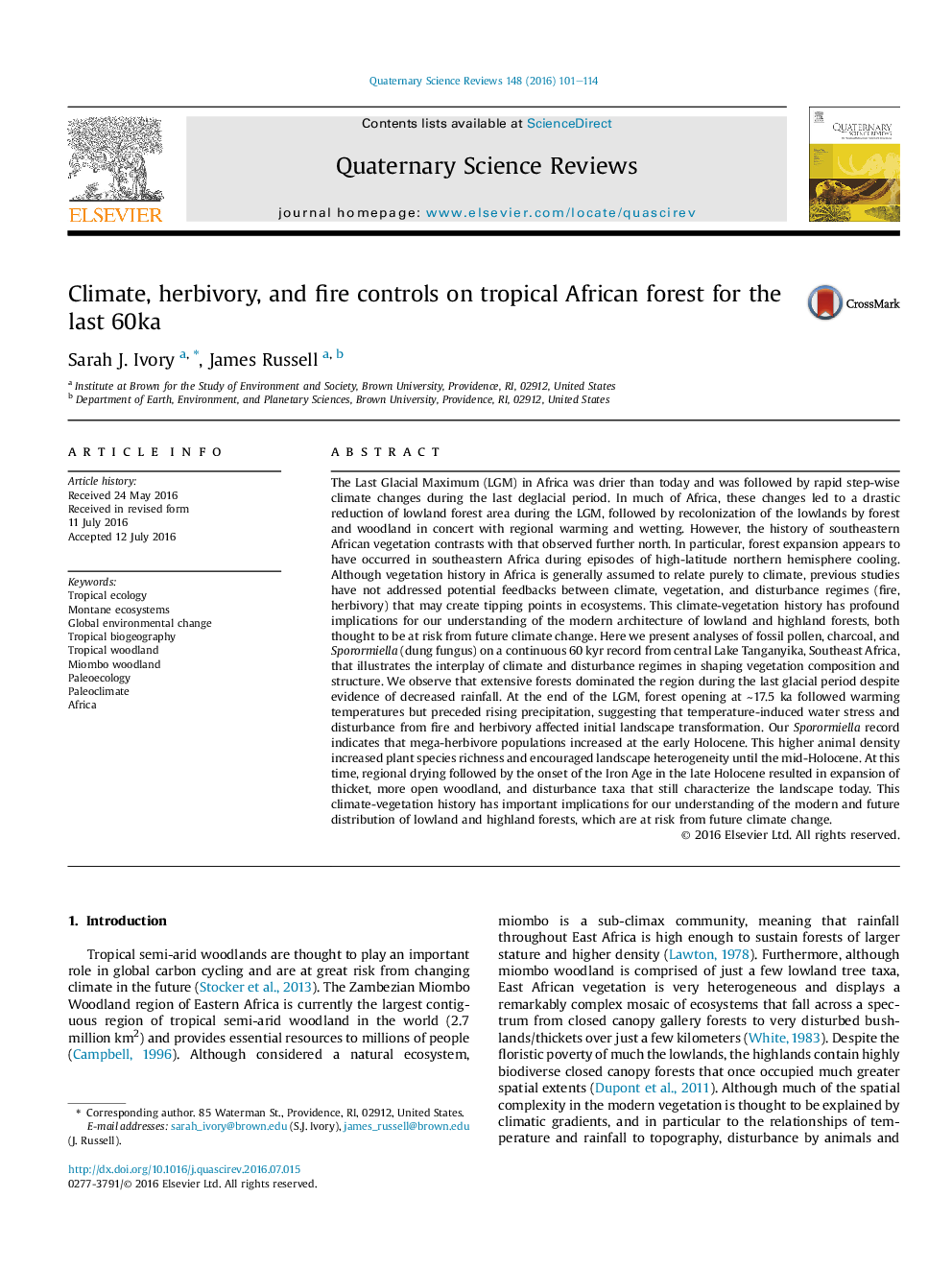| کد مقاله | کد نشریه | سال انتشار | مقاله انگلیسی | نسخه تمام متن |
|---|---|---|---|---|
| 6445373 | 1640787 | 2016 | 14 صفحه PDF | دانلود رایگان |
عنوان انگلیسی مقاله ISI
Climate, herbivory, and fire controls on tropical African forest for the last 60ka
ترجمه فارسی عنوان
آب و هوا، گیاهان و کنترل های آتش در جنگل های آفریقایی گرمسیری برای 60 سال گذشته
دانلود مقاله + سفارش ترجمه
دانلود مقاله ISI انگلیسی
رایگان برای ایرانیان
کلمات کلیدی
موضوعات مرتبط
مهندسی و علوم پایه
علوم زمین و سیارات
زمین شناسی
چکیده انگلیسی
The Last Glacial Maximum (LGM) in Africa was drier than today and was followed by rapid step-wise climate changes during the last deglacial period. In much of Africa, these changes led to a drastic reduction of lowland forest area during the LGM, followed by recolonization of the lowlands by forest and woodland in concert with regional warming and wetting. However, the history of southeastern African vegetation contrasts with that observed further north. In particular, forest expansion appears to have occurred in southeastern Africa during episodes of high-latitude northern hemisphere cooling. Although vegetation history in Africa is generally assumed to relate purely to climate, previous studies have not addressed potential feedbacks between climate, vegetation, and disturbance regimes (fire, herbivory) that may create tipping points in ecosystems. This climate-vegetation history has profound implications for our understanding of the modern architecture of lowland and highland forests, both thought to be at risk from future climate change. Here we present analyses of fossil pollen, charcoal, and Sporormiella (dung fungus) on a continuous 60Â kyr record from central Lake Tanganyika, Southeast Africa, that illustrates the interplay of climate and disturbance regimes in shaping vegetation composition and structure. We observe that extensive forests dominated the region during the last glacial period despite evidence of decreased rainfall. At the end of the LGM, forest opening at â¼17.5 ka followed warming temperatures but preceded rising precipitation, suggesting that temperature-induced water stress and disturbance from fire and herbivory affected initial landscape transformation. Our Sporormiella record indicates that mega-herbivore populations increased at the early Holocene. This higher animal density increased plant species richness and encouraged landscape heterogeneity until the mid-Holocene. At this time, regional drying followed by the onset of the Iron Age in the late Holocene resulted in expansion of thicket, more open woodland, and disturbance taxa that still characterize the landscape today. This climate-vegetation history has important implications for our understanding of the modern and future distribution of lowland and highland forests, which are at risk from future climate change.
ناشر
Database: Elsevier - ScienceDirect (ساینس دایرکت)
Journal: Quaternary Science Reviews - Volume 148, 15 September 2016, Pages 101-114
Journal: Quaternary Science Reviews - Volume 148, 15 September 2016, Pages 101-114
نویسندگان
Sarah J. Ivory, James Russell,
